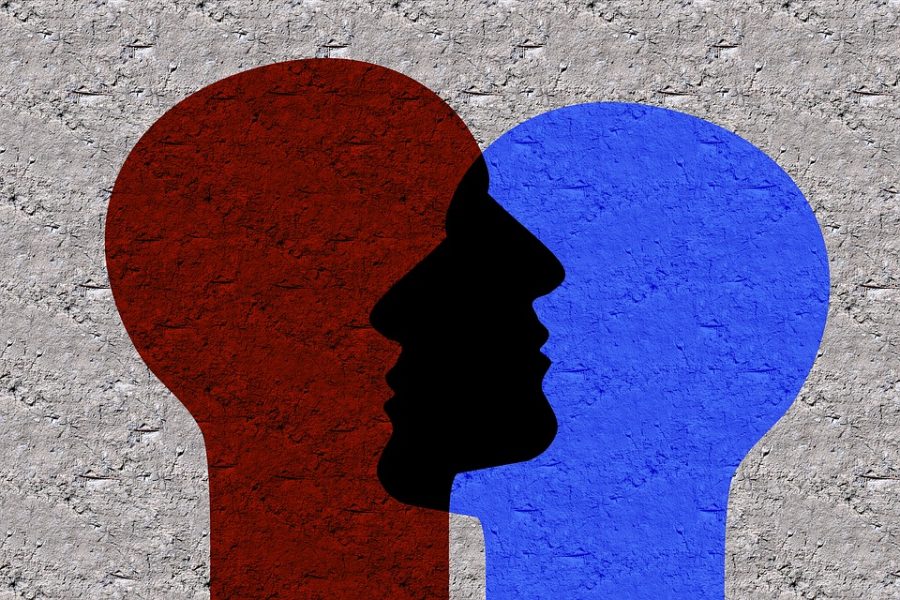‘Split’ Shows Unfair Representation of Mental Illness
People with Dissociative Identity Disorder have multiple identities in the same mind.
IMDb says that the estimated monetary budget to make the movie “Split” was $9,000,000. However, the emotional cost on people affected by the mental illness shown in the movie is more than money can define.
According to the National Alliance on Mental Illness (NAMI), 2 percent of the U.S. population has the mental illness depicted in the film, known as Dissociative Identity Disorder (DID), which is “characterized by alternating between multiple identities. A person may feel like one or more voices are trying to take control in their head. Often these identities may have unique names, characteristics, mannerisms and voices.”
About half of the adult population has experienced what is known as a depersonalization or derealization episode, which is common with the disorder and other dissociative disorders like it. The Encyclopedia Britannica defines a depersonalization episode as a feeling that you or the outside world are unreal.
“I think that you have to be careful because you can’t take what you see in a movie and take it as accurate of what a mental illness could be,” school psychologist Mr. Cotie Strong said. “My kind of concern with that is that if that’s the only understanding of what somebody has about dissociative identity disorder.”
It’s not that uncommon to experience depersonalization, and because of that, it’s important to understand illnesses like DID. However, the director of “Split”, M. Night Shyamalan, doesn’t appear to think that it’s that important to understand the disorder that his latest movie is based around.
One of the main problems with the film was the fact that the main character, Kevin, has several violent personalities, and without spoiling too much, performed several violent acts in the movie. This just simply isn’t realistic, as the US National Library of Medicine reported that people with DID are more likely to hurt themselves than other people. By showing DID as a violent illness, it creates a stereotype that simply isn’t true, but still defines the people with the illness.
“People with mental illnesses are the people who need the most help and might be the least likely to go get it,” psychology teacher Ms. Erin Laney said. “That can be because there’s always such a negative portrayal of mental illness.”
Making violence such a centerpiece of Kevin’s identities, or alters as they are sometimes called, does a terrible disservice to the DID community. In a statement regarding the movie, The International Society for the Study of Trauma and Dissociation reported that of 173 patients with DID observed over a six month time period, only 0.6 percent were incarcerated for a criminal offense. They concluded from this that the features of the disorder did not lead to any of the convictions, meaning that the disorder could not have directly caused any of the criminal actions taken.
Another problem with the negative portrayal of DID in the film is the fact that not everyone is educated on the actual symptoms of the illness. SANE, a nonprofit research organization in Australia, conducted research that shows that movies that portray DID in a negative way can reduce the chances that an undiagnosed person with DID will seek help. It also makes people more likely to view the illness in a negative light.
SANE also explained that people with DID are not all the same. Some people can have a great number of alternate identities, while others may only have two. The differences in the alters also varies, as some peoples will be vastly different while others not so much.
“I think especially if [DID patients] are young [the movie] gives them a terrible self image and portrays them as a monster,” sophomore Erin Noneman said.
M. Night Shyamalan has defended his movie’s stance on mental illness in various interviews, stating that he feels it’s an accurate depiction of DID. Of course, this isn’t true, as the violence in the film was unrealistic and an unfair representation of the mental illness.
“I did not [find the movie offensive]. I thought it was very elaborate,” senior Alexandra McCue said. “His case was so different; half the movie plot his therapist was trying to fight for him and that it was a real illness that affects people.”
It’s important to understand that the portrayal of mental illness you are getting is not always accurate. But, it’s also important for directors to be making the decision to accurately represent these illnesses. Unfortunately, M. Night Shyamalan didn’t do this, making “Split” an exaggerated stereotype of what dissociative identity disorder actually is. Films that stigmatize mental illness are harmful to everyone; moviegoers deserve factual representation of mental health.

Senior Sarah Jacobson is a third-year staff reporter, former Our World editor, and current Editor-in-Chief of the Spotlight. She is also the head of social...


